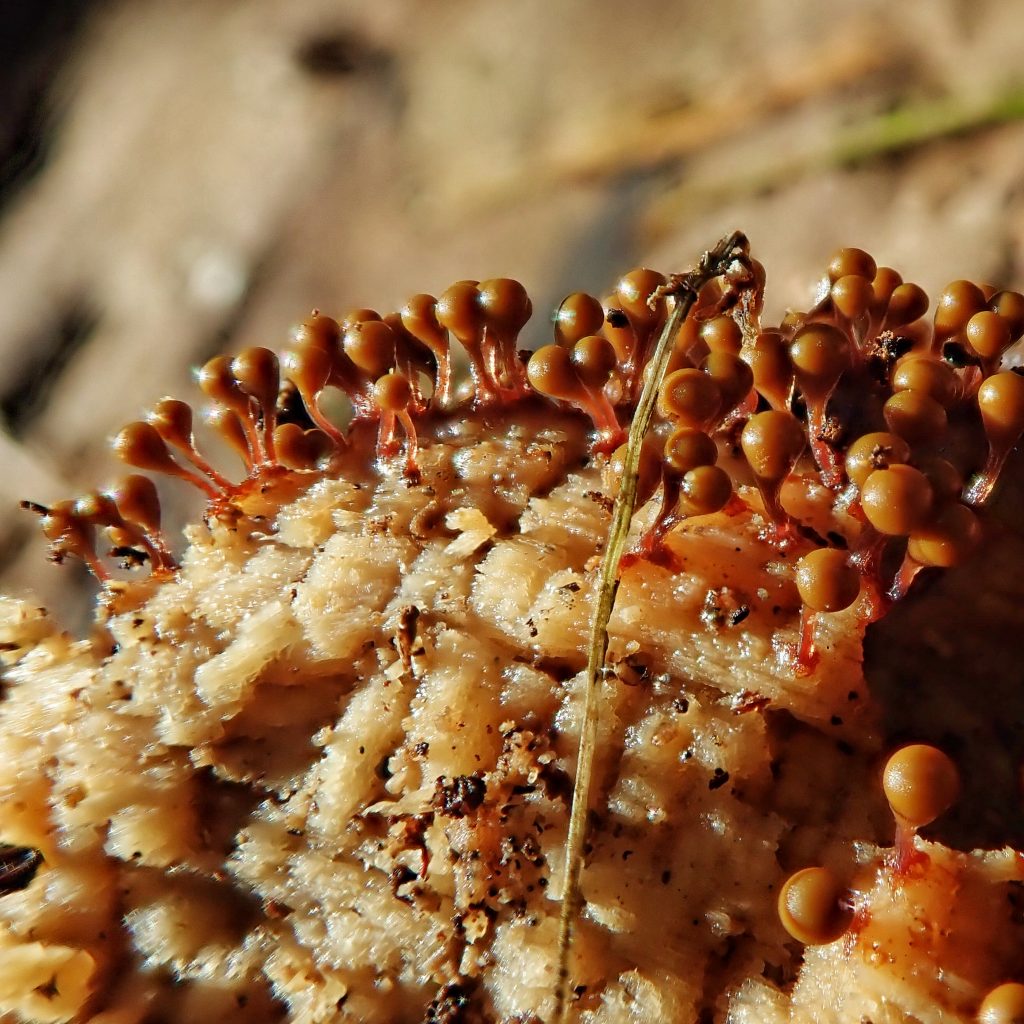
As I explore the myxos I am relearning a valuable lesson; preconceived notions of identification (or prejudice in general), particularly ill informed ones based on looking at some photos (and just because someone labels a photo on the internet as X species does not mean that that is a valid identification anyway), get in the way of seeing what is really there, and lead to trying to hammer square pegs into round holes.
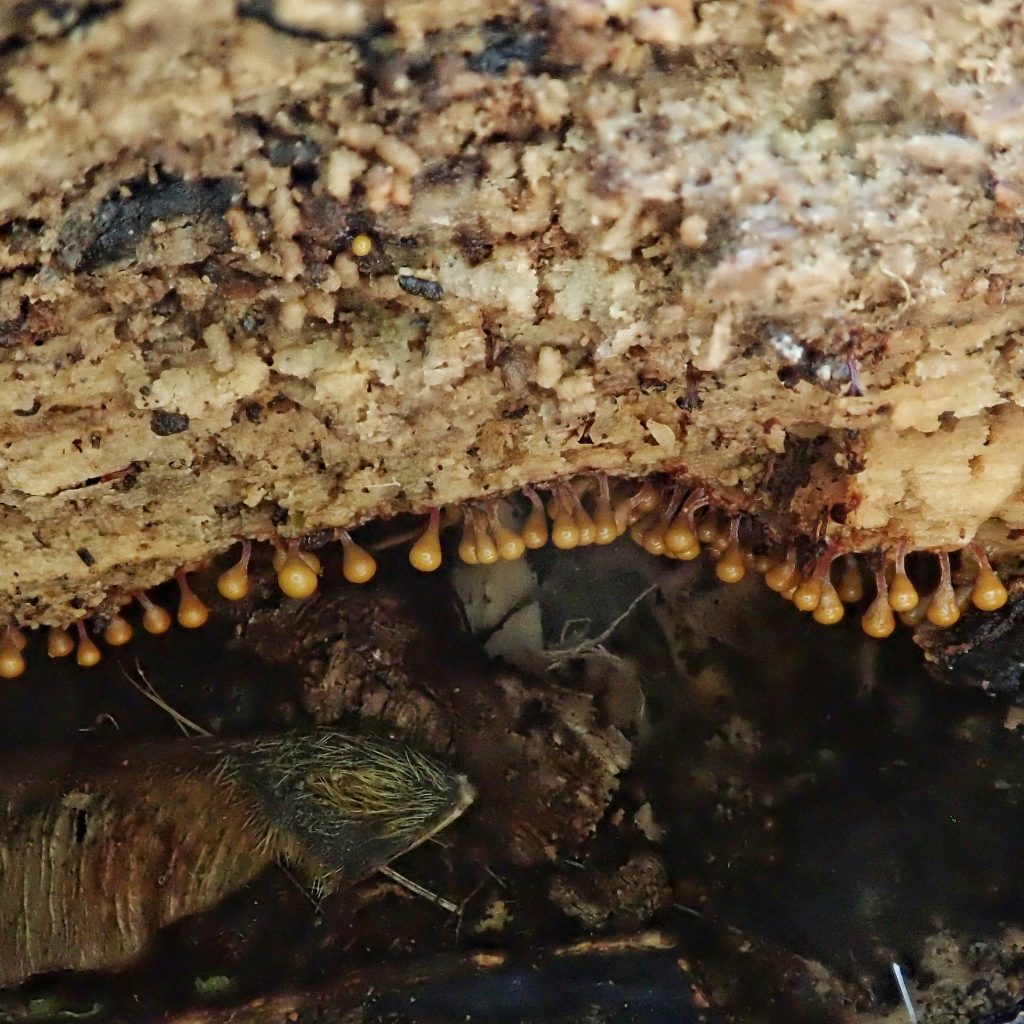
In this case my wealth of inexperience led me to being positive that this was Trichia decipiens, so I completely glossed over the couplet in the key that said ‘Threads of capillitium united into an intricate net, with few free ends’, because I saw one free end, and it had to be in Trichia. But then the spore size was all wrong, and the few capillitium ends I found were blunt rather than tapered, so I tried to hammer it into the T. subfusca slot. But I just couldn’t jam it in there. So I walked away, got my head right, and came back to it last night with an open mind. When I worked the key carefully and diligently this specimen slid smoothly into the Hemitrichia clavata hole.
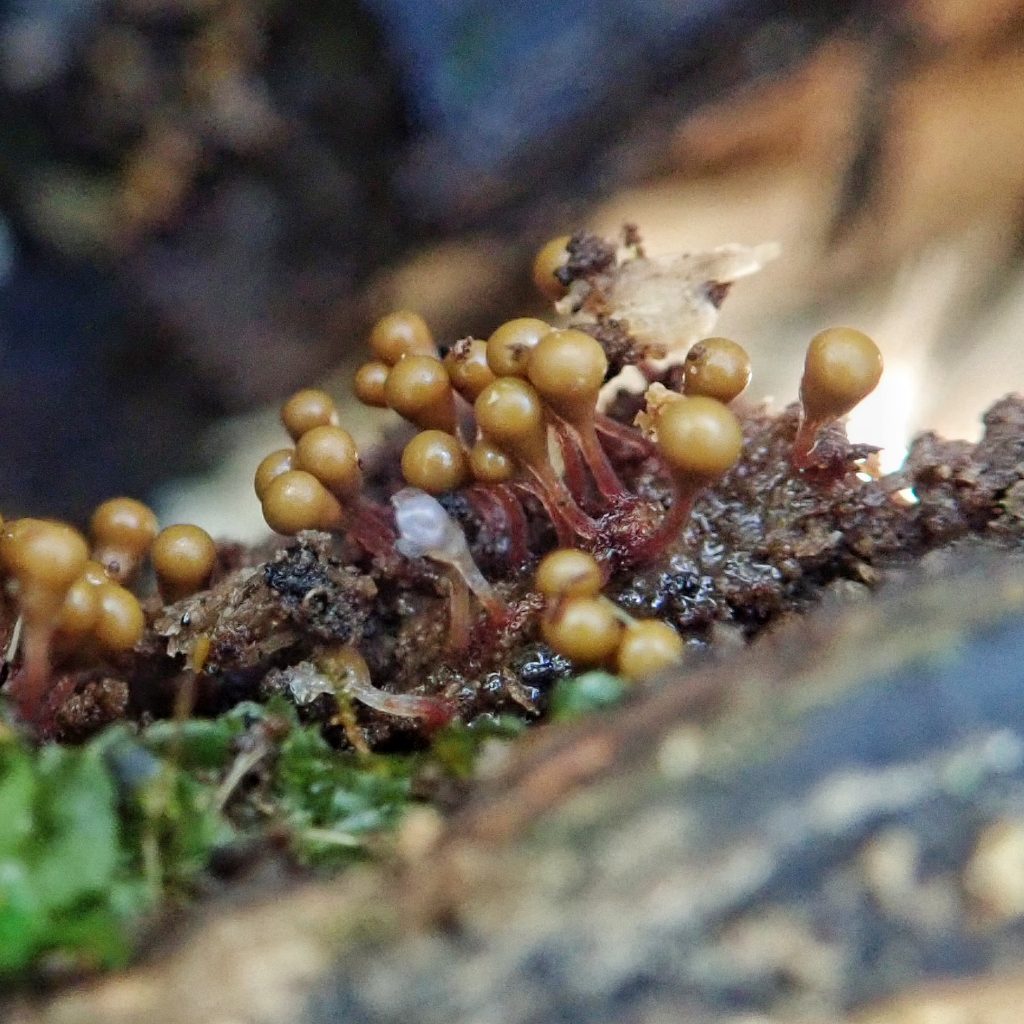
The only common name I found for this is yellow-fuzz cone slime, a great and descriptive name for this species once the peridium has disintegrated to expose the cup of fuzzy, spore containing capillitium. The photo below is from near the beginning of this process. Unfortunately it shares this common name with other Hemitrichia sp., to which it applies equally as well.
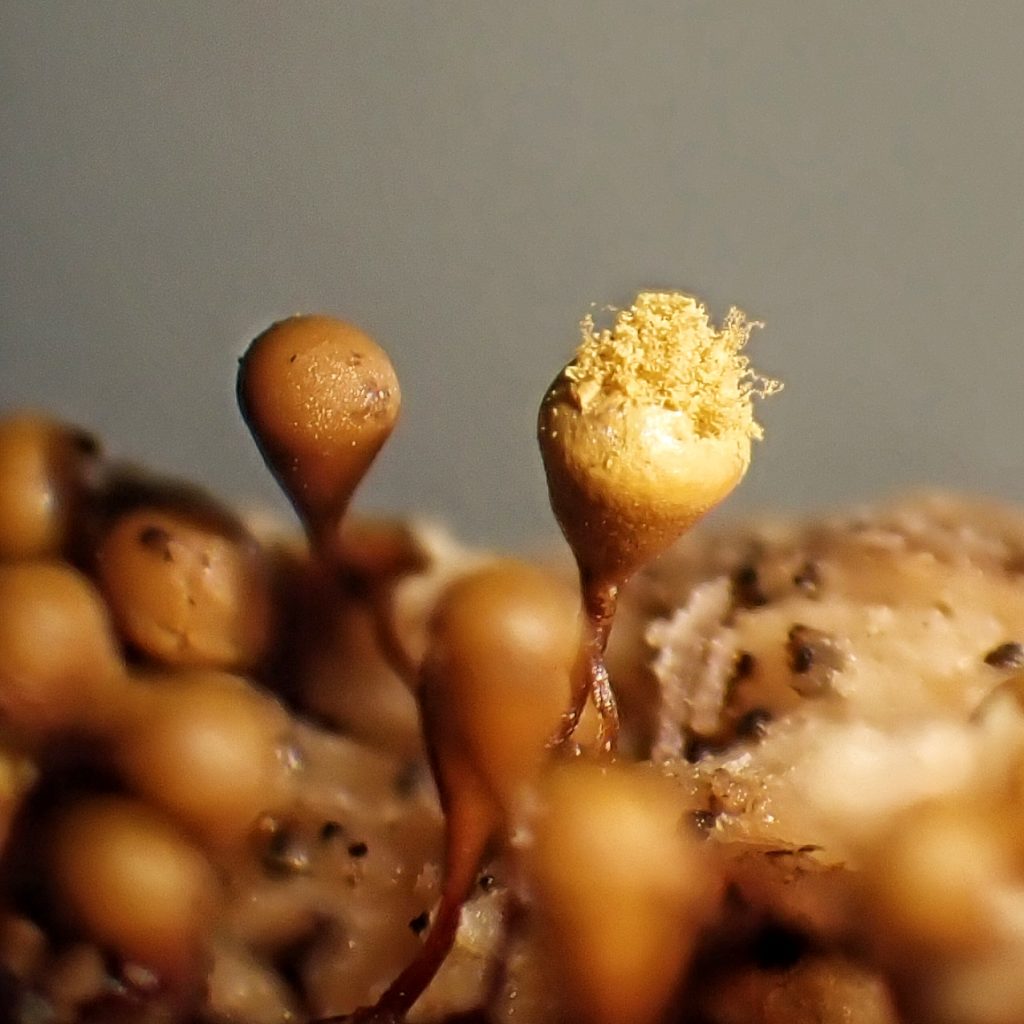
There is movement among myxologists to group the species of Hemitrichia and Arcyria into a single genus (which would probably be called Arcyria since that is the older name) because they share the uncommon trait of having their stems filled with spore-like material, rather than being hollow or filled with granular material. I had a hard time finding information on this, but it appears that the genus Arcyria now has its own family, Arcyriaceae, so that joining Hemitrichia to Arcyria would mean moving it out of Trichiaceae. Study of Myxogastria has escalated rapidly in the last 30 years, and new information is coming to light almost daily. But how that will play out for the taxonomic classification of the myxos remains to be seen.
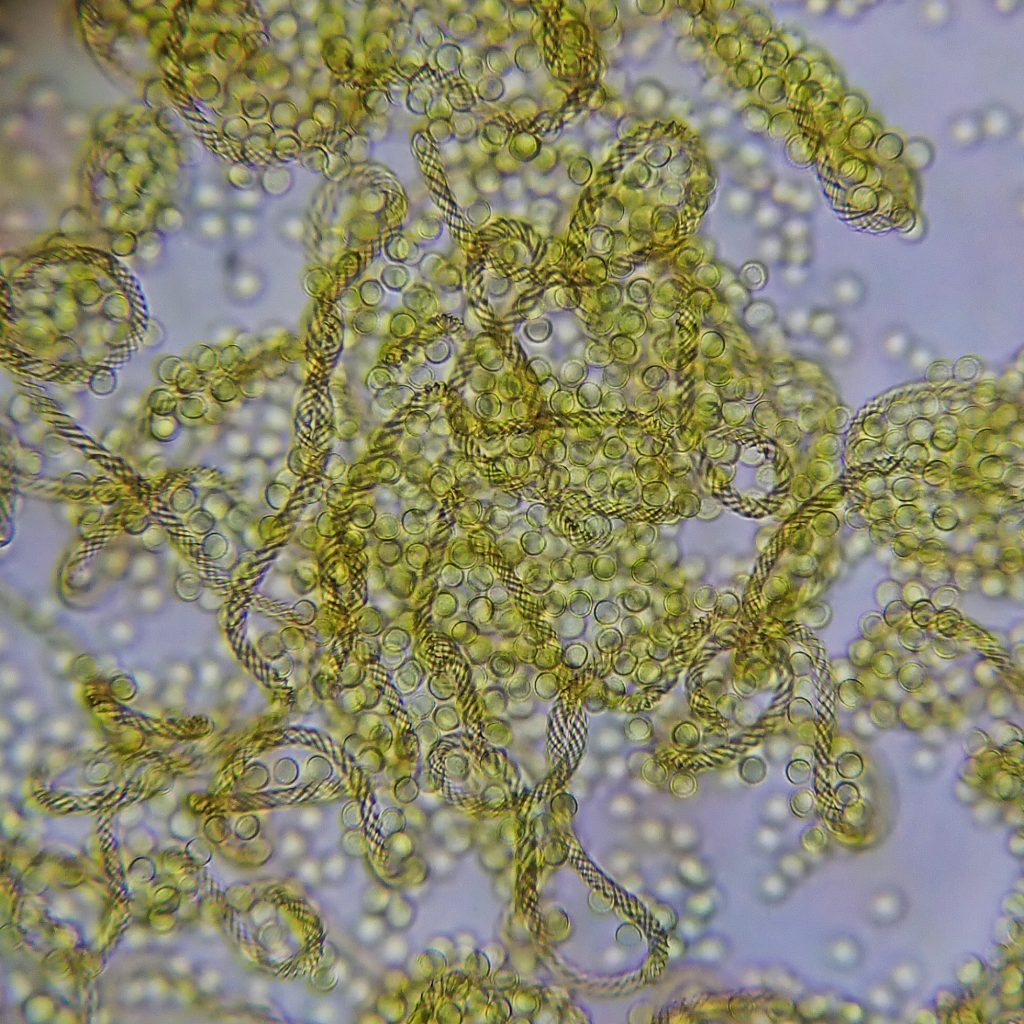
Description-Medium sized (up to 3mm tall with 1-1.5mm stalk), yellow to olive or brown sporangia that are club (clavate) or top (turbinate) shaped; stalk widening towards the top; peridium mostly smooth, disappearing above at maturity to expose the spore containing capillitium, but remaining as a cup below; capillitium a net of threads with 5-6 spiral bands, 5-6μm in diameter; spores yellow en mass, 8-9μm in diameter, with minute warts; plasmodium white to pale red.
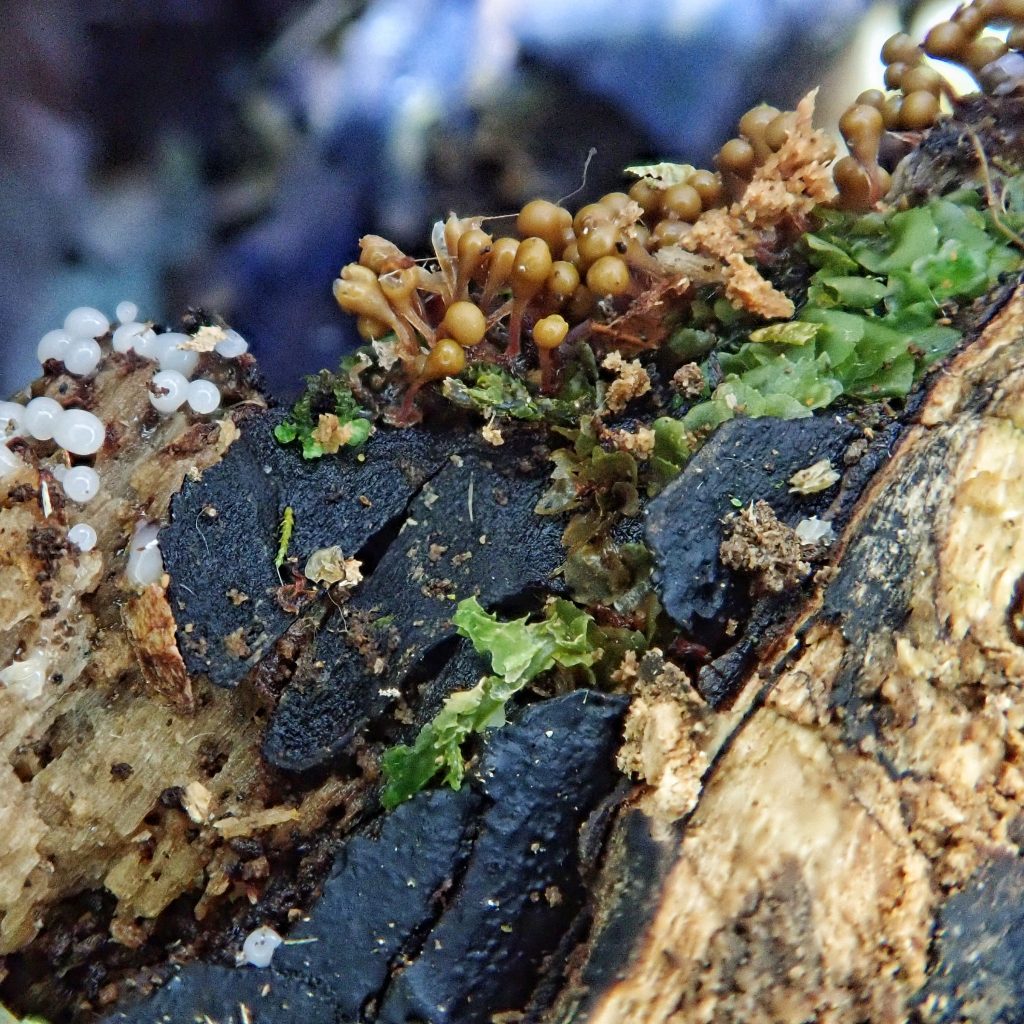
Similar species-Positive identification of myxos requires high magnification and a key such as this one; Hemitrichia calyculata (formerly H. stipitata, and probably headed toward being H. clavata var. calyculata) has a stalk that remains cylindrical to the base of the peridium, and an ochraceous plasmodium; Trichia decipiens (as well as other Trichia sp.), have many free elaters that thin gradually to a point.
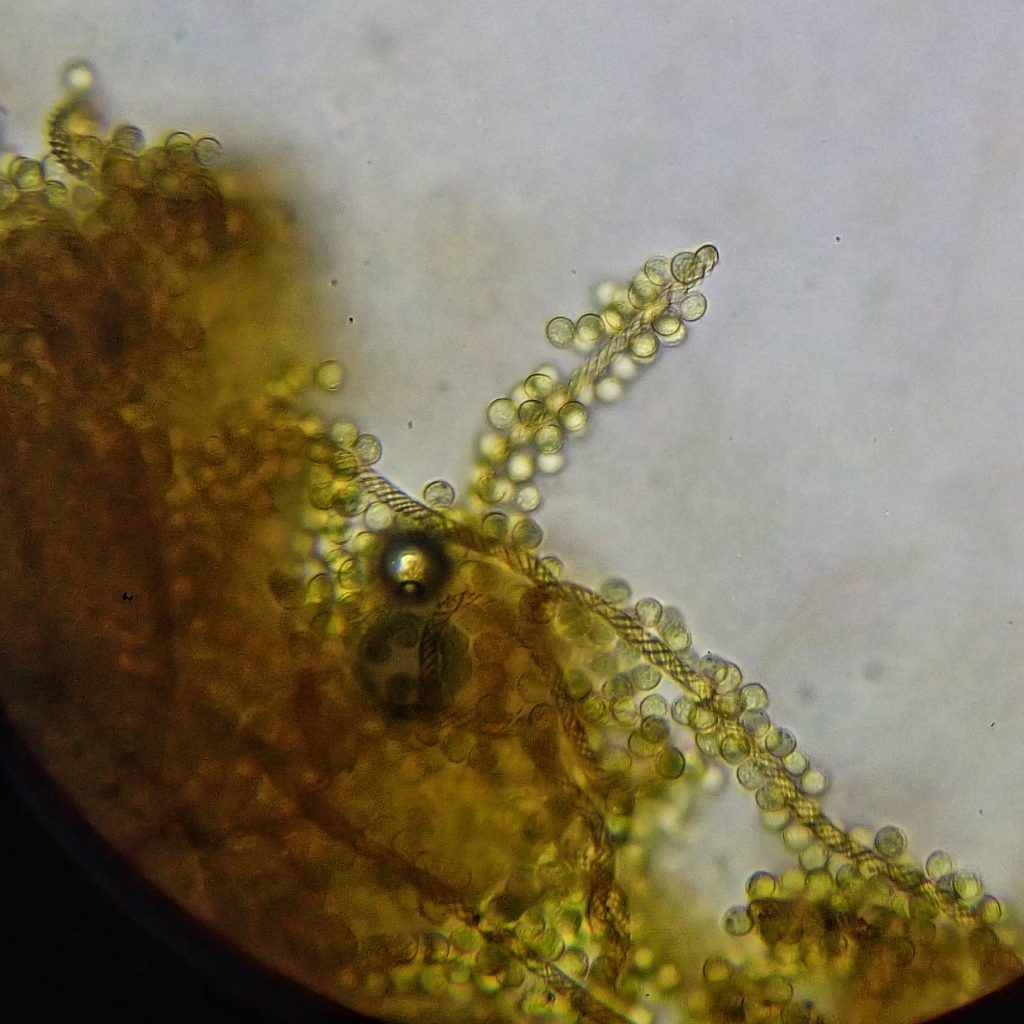
Habitat-Decaying wood and occasionally bark; may prefer hardwoods
Range-Worldwide; more common in the Northern Hemisphere than in the Southern Hemisphere; probably region wide in appropriate habitats, but more common west of the Cascades.
Eats-Bacteria and possibly spores.
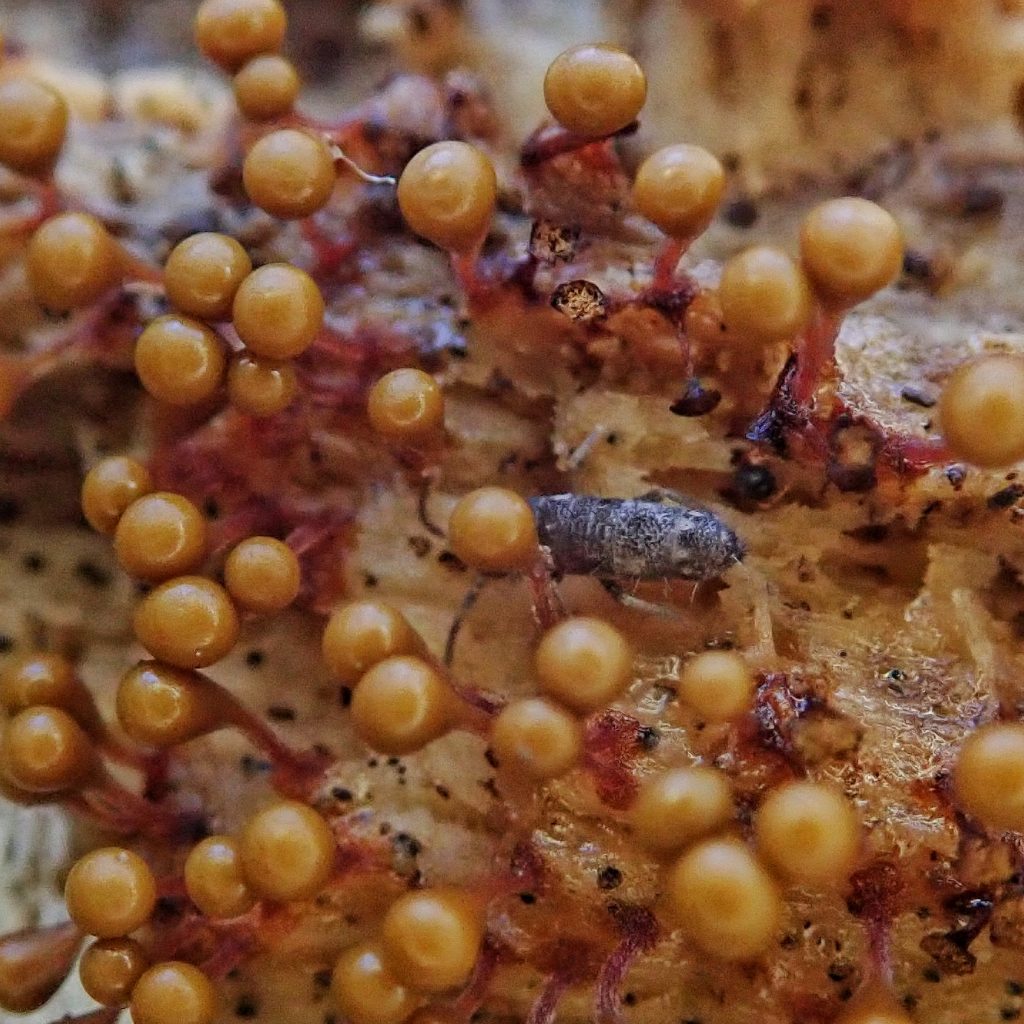
Eaten by-Parasitized by the fungi Polycephalomyces tomentosus; Agathidium spp.,and Baeocera spp. beetles are known to feed on this species, and it is likely that many more myxo specialists in the beetle families Lathridiidae, Sphindidae, Scaphidiidae, and Leiodidae do so also; woodlice (including Oniscus asellus), some millipedes, a wide range of flies, various mites, nematode worms, and slugs and snails; sometimes grazed by mice.
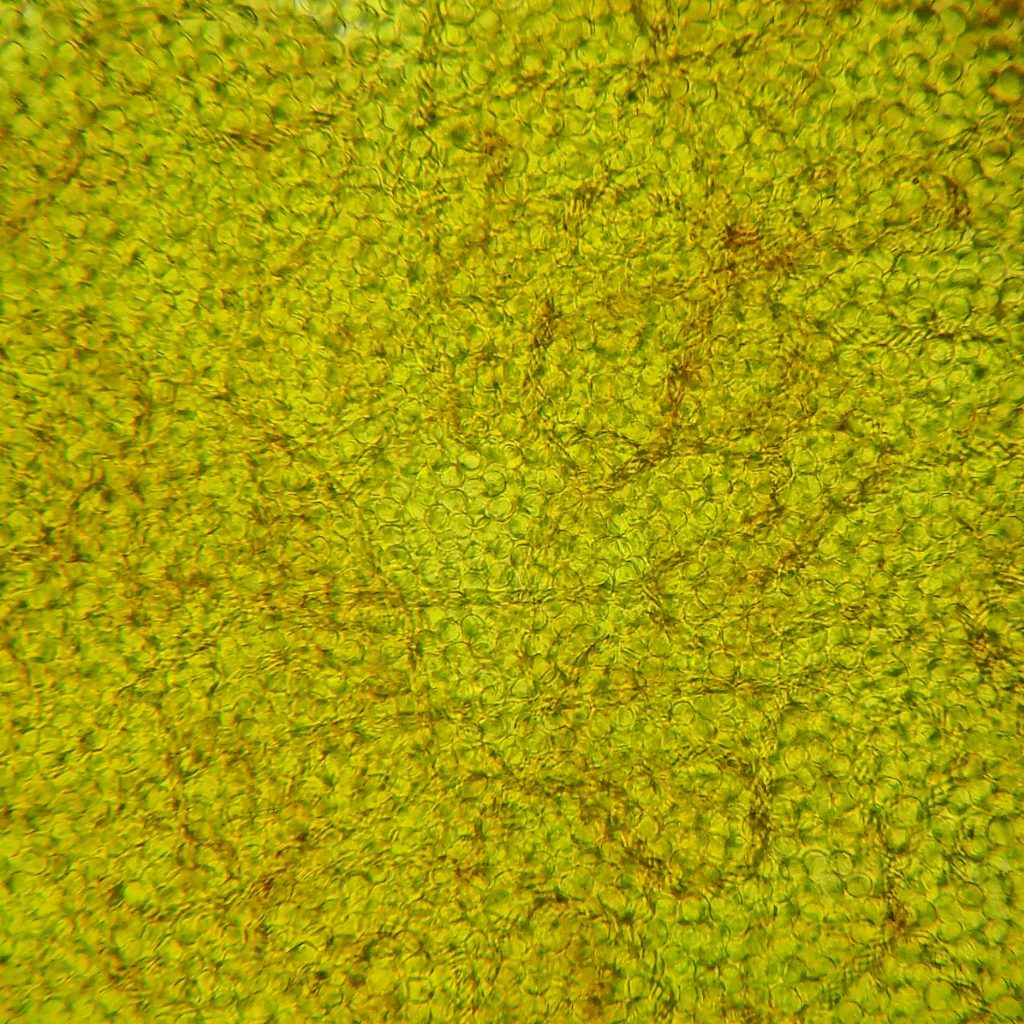
Reproductive timing-Definitely sporulates in the fall, and that may be its primary reproductive time, but it may also sporulate whenever there is significant moisture after extended dry spells, since it is known to do so in some settings.
Etymology of names–Hemitrichia is from the Greek words for ‘half hairy’, and refers to the fact that members of this genus may have free capillitium, or they may be arranged into a net, as they are in Hemitrichia clavata. The specific epithet clavata is from the Latin word for ‘club’, and refers to the club shaped sporangia.
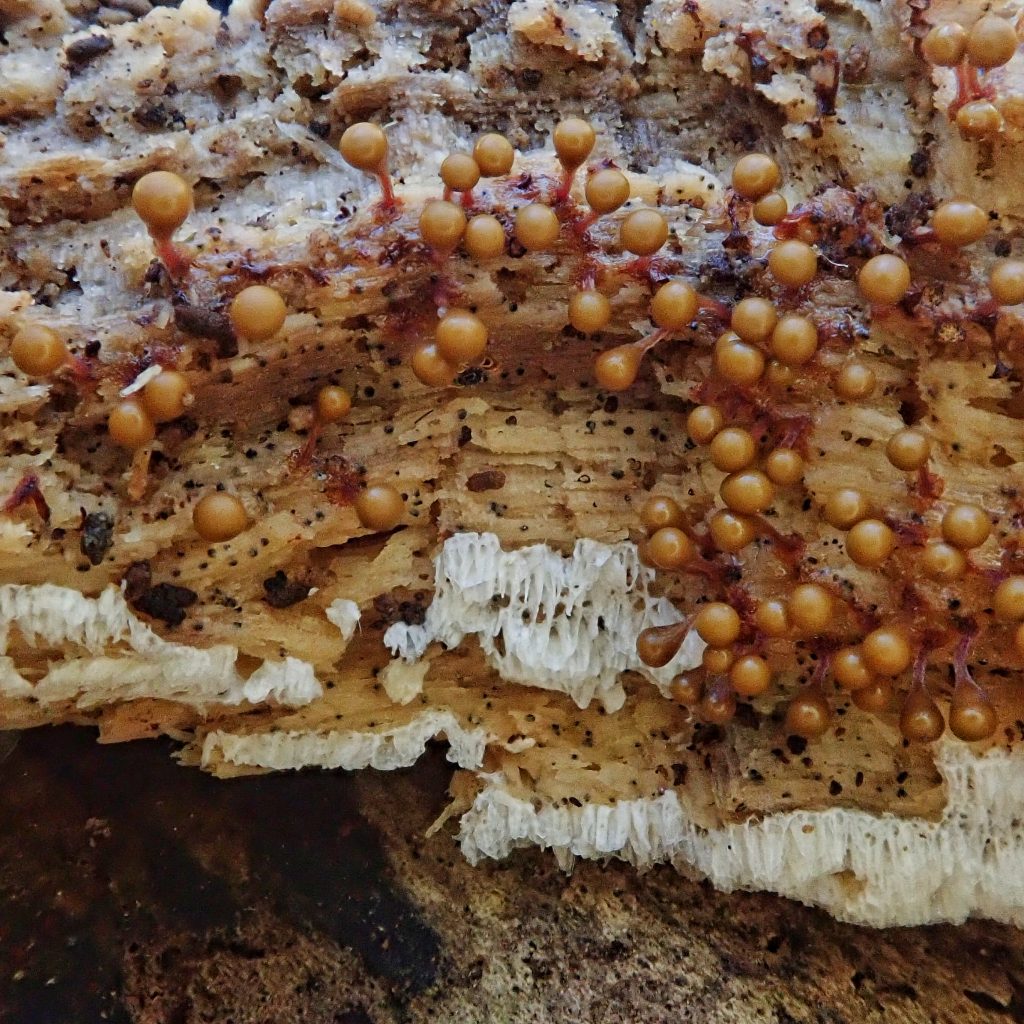
http://www.hiddenforest.co.nz/slime/family/trichiaceae/trich14.htm
https://naturallycuriouswithmaryholland.wordpress.com/tag/hemitrichia-clavata/
https://www.jstor.org/stable/23726551
https://www.jungledragon.com/specie/5413/map
https://www.myxotropic.org/myxo-keys-english/

Superb
Thank you!